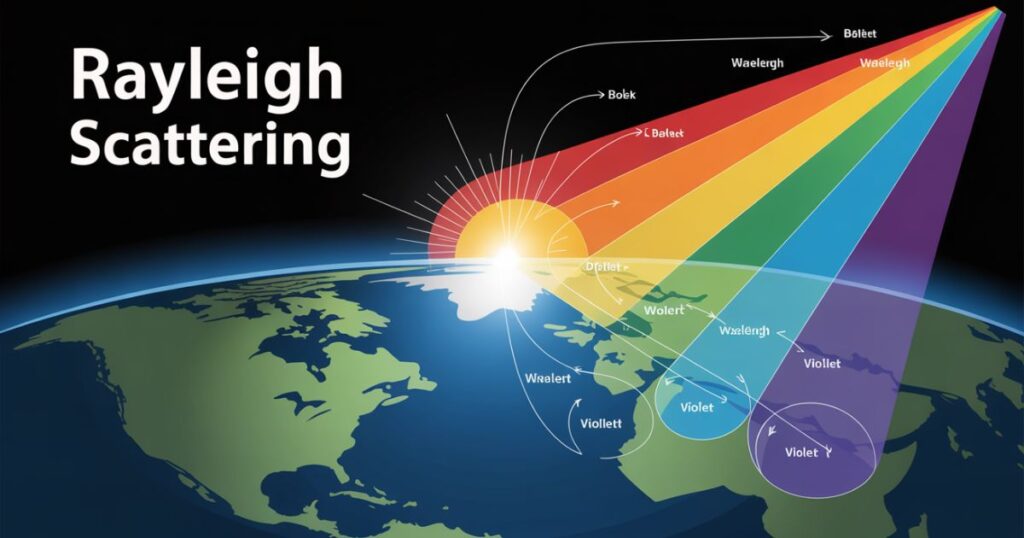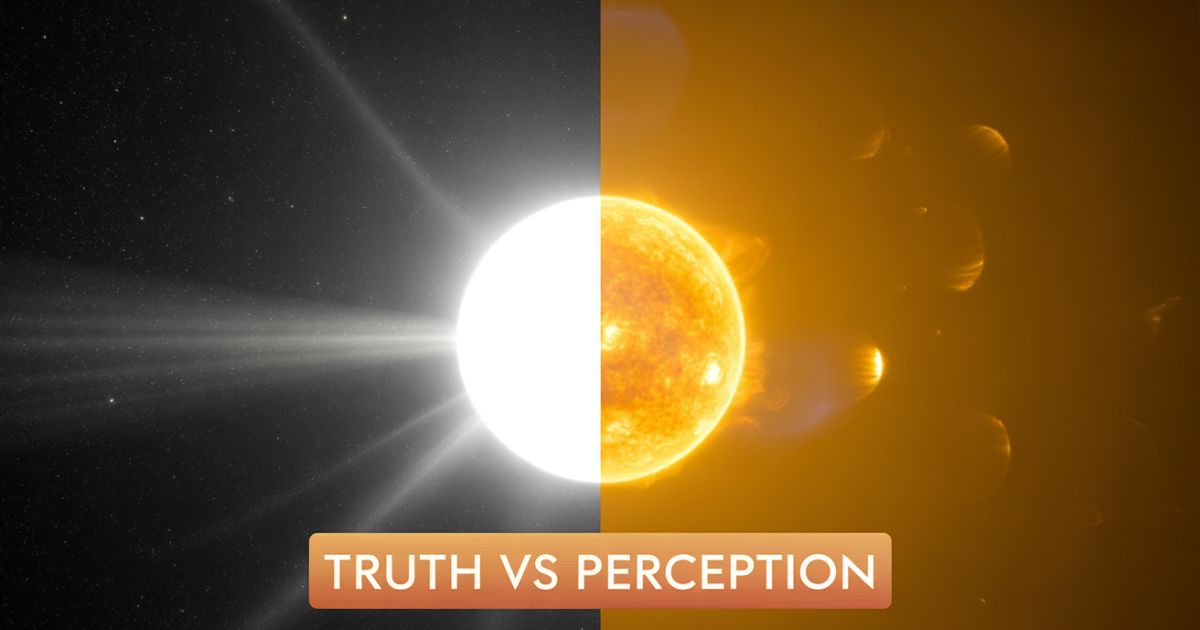Have you ever stopped during your morning walk and wondered about the colour of the sun? You’re not alone. This seemingly simple question has puzzled millions across India and beyond. Here’s the truth that’ll blow your mind: everything you think you know is wrong.
Also Read : Shanin Blake: Age, Net Worth, Career, Relationship [2025]
A Star with a Serious Identity Crisis
Our beloved sun suffers from the ultimate case of mistaken identity. Walk into any physics classes across India, and you’ll hear the same story repeated endlessly.
The Great Yellow Deception
Most Indians perceive our sun as a brilliant yellow star. Children’s artwork consistently shows golden orbs. Festival celebrations during Chhath Puja honor this golden deity. Even Bollywood movies paint romantic scenes with amber sunsets.
But here’s where things get interesting.
Scientific Truth Behind Solar Spectrum
The sun is white. Not yellow. Not orange. Pure, brilliant white.
This revelation comes from understanding the visible spectrum. Our sun emits electromagnetic radiation across all wavelengths simultaneously. When combined, these create white light – exactly like mixing all rainbow colors together.
Key Scientific Facts:
- Sun’s surface temperature: 5,778 Kelvin
- Peak wavelength: Blue-green region (500 nanometers)
- Actual classification: G-type main-sequence star
- True color of sunlight: White with slight blue tint
| Star Type | Temperature (K) | Actual Color | Common Perception |
| Our Sun (G-type) | 5,778 | White | Yellow/Orange |
| Sirius (A-type) | 9,940 | Blue-white | Bright white |
| Betelgeuse (M-type) | 3,500 | Red | Red |
The truth emerges when you examine unfiltered sunlight in space. Astronauts consistently report seeing pure white solar radiation.
The Atmospheric Dress Code: A Trick of the Air

Earth’s atmosphere acts like a cosmic disco ball, transforming white sunlight into golden illusions through sophisticated optical trickery.
Rayleigh Scattering: The Science Behind the Magic
Atmospheric conditions create this magnificent deception through a phenomenon called Rayleigh scattering. Here’s how this scattering effect works:
Blue wavelengths scatter more intensely than red ones. When white sunlight enters our atmosphere, blue light bounces around like crazy. Red and yellow wavelengths travel straight through with minimal interference.
The Mathematical Reality:
- Blue light scatters 4x more than red light
- Shorter wavelengths = more scattering
- Longer wavelengths = less scattering
- Result: Yellow-orange sun appearance
The Indian Atmosphere’s Special Effects
India’s unique geography adds extra drama to this sun color transformation:
Factors Affecting Solar Appearance in India:
- Dust particles from Rajasthan deserts
- Monsoon humidity creating water droplets
- Urban pollution in major cities
- Seasonal variations throughout the year
During monsoons, increased moisture enhances the horizon filter effect. Dry seasons reveal clearer, whiter sunlight at noon.
Time-of-Day Color Changes
Watch how our sun’s wardrobe changes throughout Indian days:
Morning (6-8 AM): Deep orange-red appearance Noon (12-2 PM): Closest to true white color Evening (5-7 PM): Romantic golden hues Sunset (7-8 PM): Dramatic red-orange finale
This daily transformation occurs because sunlight travels through varying atmospheric thickness. Morning and evening light passes through maximum atmosphere, creating maximum scattering.
A Star in Space: The Fashion Forward Sun
Strip away Earth’s atmospheric interference, and our sun reveals its true stellar fashion sense.
Astronauts’ Perspective: Seeing Truth
International Space Station astronauts consistently describe the sun is white when viewed without atmospheric filtering. Indian astronaut Rakesh Sharma noted this phenomenon during his historic space mission.
Space Observations Reveal:
- Pure white solar radiation
- No yellow tinting whatsoever
- Intense brightness requiring protection
- True cosmic disco ball appearance
Photographic Evidence from Space Missions
NASA’s solar observation satellites capture unfiltered images showing brilliant white solar surfaces. India’s Aditya-L1 mission provides similar evidence of our sun’s true coloration.
These images contrast sharply with Earth-based photography, where atmospheric filtering creates the familiar golden appearance we associate with sunrise and sunset scenes.
The Colour Temperature Science
Understanding stellar classification reveals why the colour of the sun appears white:
Stellar Temperature Chart:
- Cool stars (3,000K): Red appearance
- Medium stars (5,778K): White appearance (our sun)
- Hot stars (10,000K+): Blue-white appearance
Our sun sits perfectly in the white zone of stellar classification.
Practical Implications of Solar Truth
This knowledge impacts various Indian applications:
Solar Energy Efficiency: Panels designed for white light spectrum perform better Photography Settings: Proper white balance requires understanding true solar color Educational Corrections: Physics classes need updated materials Smart Home Devices: Light sensors calibrated for actual sunlight spectrum
Modern smart home devices increasingly use this scientific understanding for accurate light detection and automated responses.
Conclusion
Next time you perform Surya Namaskar, remember you’re saluting a brilliant white star disguised in atmospheric costume.
The colour of the sun represents one of nature’s most beautiful illusions. While the scientific truth reveals pure white light, Earth’s atmosphere creates the golden appearances that inspire poets, painters, and lovers across India.
This knowledge doesn’t diminish the beauty of spectacular sunsets or the romantic angst of golden hour photography. Instead, it adds layers of appreciation for both natural physics and atmospheric artistry.











